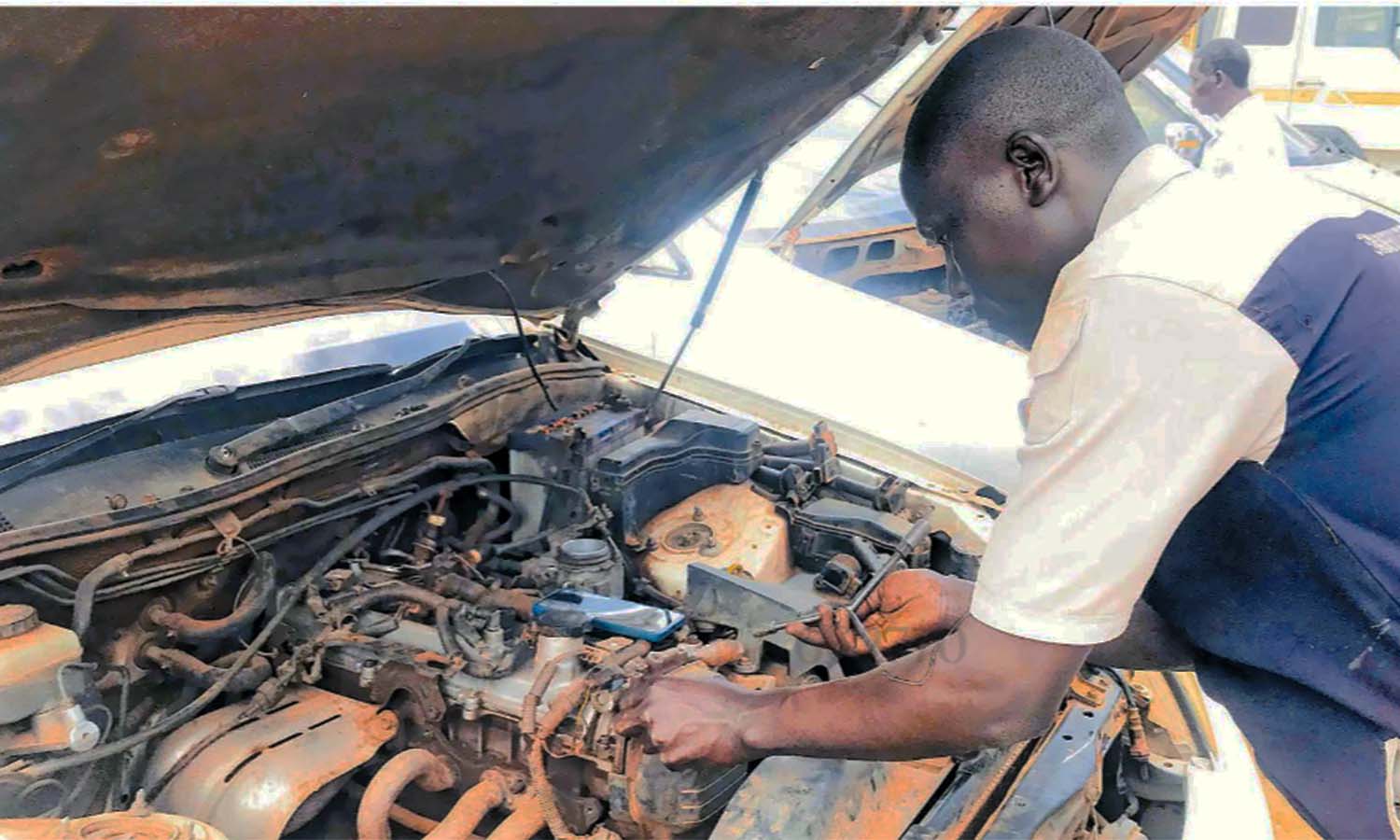Prime
Is that infuriating Check Engine Light on again?

The check engine light — more formally known as the malfunction indicator lamp — is a signal from the car’s engine computer that something is wrong and there is cause to worry. PHOTOS/isaac ssejjombwe
What you need to know:
If the check engine light illuminates, it will either blink or remain constantly illuminated, depending on the problem. A blinking light indicates a problem that needs immediate attention. If the light is steady, the problem is not an emergency, but you should schedule an appointment as soon as possible.
Say you are driving to work, taking the kids to school, or running a routine errand and then you see it, the Check Engine Light.
For many people, the sight of a Check Engine Light triggers visions of a costly repair bill and a sense of worry, since most do not really know what it means.
For others, it is just another light on the dash that does not mean a thing because more often than not this light shall turn on but the car moves along just fine.
Most people, even people that do not really know what engines actually look like at all, know that the little light that looks like a submarine is referring to the engine.
The Check Engine Light turns on when your car’s computer, which monitors your car’s performance, finds a problem in the electronic control system that it cannot correct.
There are a number of sensors in your car, any of which can send a signal to your car’s computer telling it that something is not quite right.
If the light comes on for a little while and then goes out, you may have a momentary problem in the system. Once the light goes out, the problem is no longer occurring but it may have caused the computer to store a diagnostic trouble code in its memory.
This is not cause for immediate action, however, you should take the car in as soon as you can and have it looked at.
When it turns on and stays on and there are no drivability problems then it indicates an ongoing problem.
You can keep driving but take the car to a garage that has a computer scanner to find out the exact problem as soon as possible. From experience this Check Engine Light never goes away and stays in your hair up until the problem causing it is fixed.
Common problems?
The most common problems that trigger the light are emission control malfunctions.
The emission control system is what your car uses to try to keep the air a little cleaner while achieving optimum engine performance through employment of several sensors.
Every car made in the last 20 - 30 years has at least one oxygen sensor.
And for this reason the car shall continue to operate okay, at least from the drivers perspective but the emissions from the exhaust shall be out of range and commonly your fuel mileage shall drop drastically.
Other items that impact emissions include damaged or missing catalytic convertor, faulty mass airflow sensor or old or worn out spark plugs.
There are several other items depending on the make of the car that can have this light illuminate outside these.
The catalytic convertor positioned somewhere along the exhaust system piping works to reduce exhaust gases. It converts carbon monoxide and other harmful materials into harmless compounds.
If your catalytic convertor is failing, you will notice a decrease in gas mileage or your car will not go any faster when you push the gas.
Case of airflow sensor
The mass airflow sensor tells the car’s computer to add the proper amount of fuel based on the air coming through to the engine. A faulty one can increase emissions, cause the car to stall, and decrease gas mileage. When the plugs are failing, the spark plugs misfire. You’ll feel a little jolt in your car’s acceleration when this happens.
But if the Engine Check Light starts flashing and your car is having drivability problems such as stalling, hard to start, slow to accelerate, black smoke coming out the back etc you should immediately pull off the road, turn off the engine, call your mechanic or have the car car towed in for repairs.
If you continue driving in such a scenario, you can do catastrophic damage, which could require an expensive repair. The longer you drive, the more expensive it becomes.
Remember that engine check light problems are sometimes not very easy to fix so you need a really experienced mechanic.
Obvious as it might seem, your first line of defence is to see whether he recommends use of a computer scanner and whether or not he understands the trouble codes the scanner finds. Additionally, unless physically visible, the problem could be a disconnected wire and you need to use an engine scanner to pinpoint the problem.
In a nutshell, do not panic if the Check Engine Light comes on.
The Check Engine Light is really your friend. The car’s computer is working hard monitoring your car’s engine and making adjustments so you can jump in your car and rush off to where ever you need to be without a thought to your car’s performance.
So, if that light comes on to tell you there is a problem, do not ignore it.
Where tyres sit
Automakers started standardising their systems with 1996 model-year vehicles under a protocol called OBD-II, which instituted a list of diagnostic trouble codes and mandated that all cars provide a universal connector to access this information. The connector is usually located under the steering column and is relatively easy to access. Before 1996, carmakers had their own engine diagnostic systems, primarily to ensure their cars were compliant with EPA pollution control requirements.
Check engine lights come in orange, yellow or amber, depending on the manufacturer. If the light begins flashing, however, it indicates a more serious problem, such as a misfire that can quickly overheat the catalytic converter. These emissions devices operate at high temperatures to cut emissions but can pose a fire hazard if faulty




